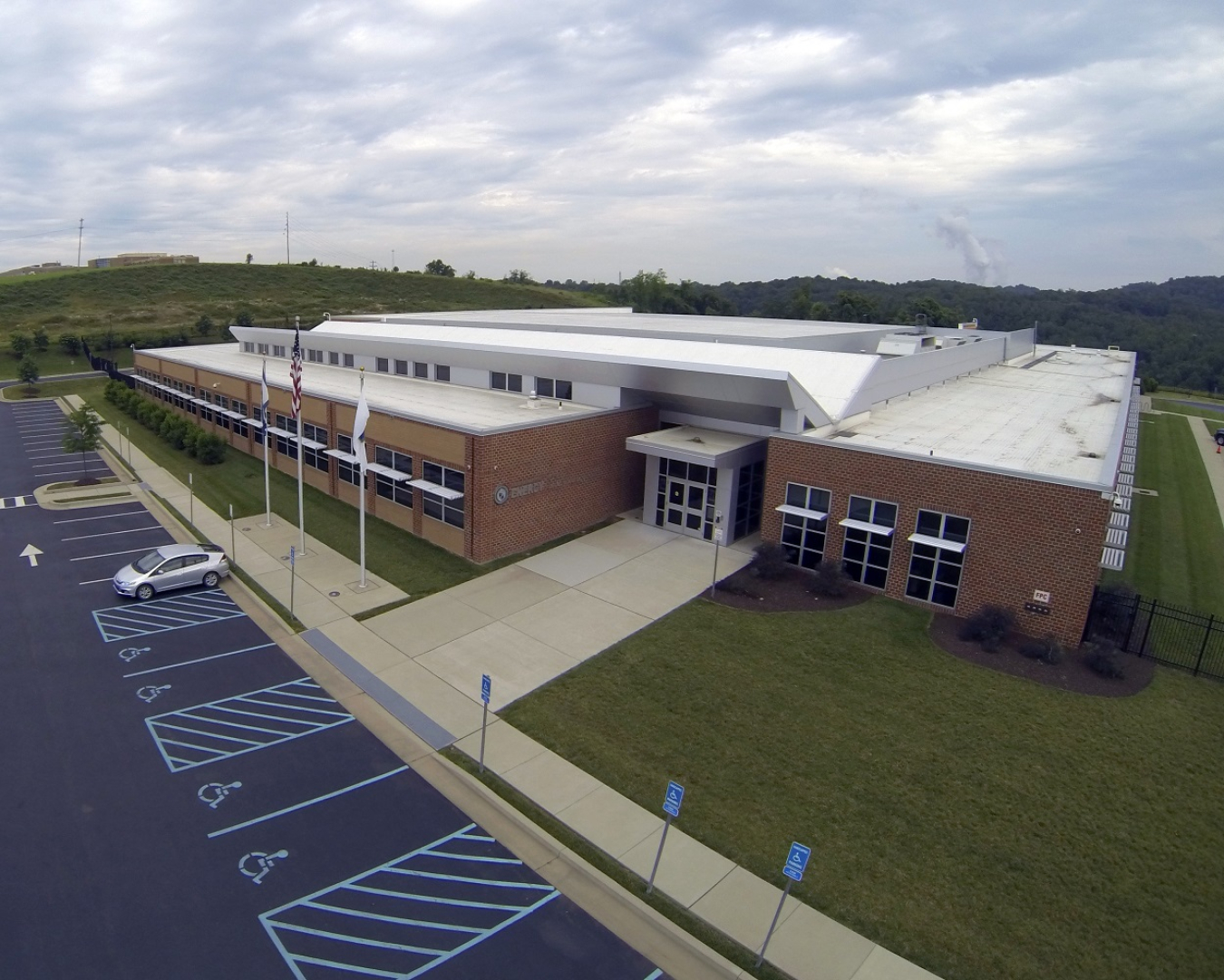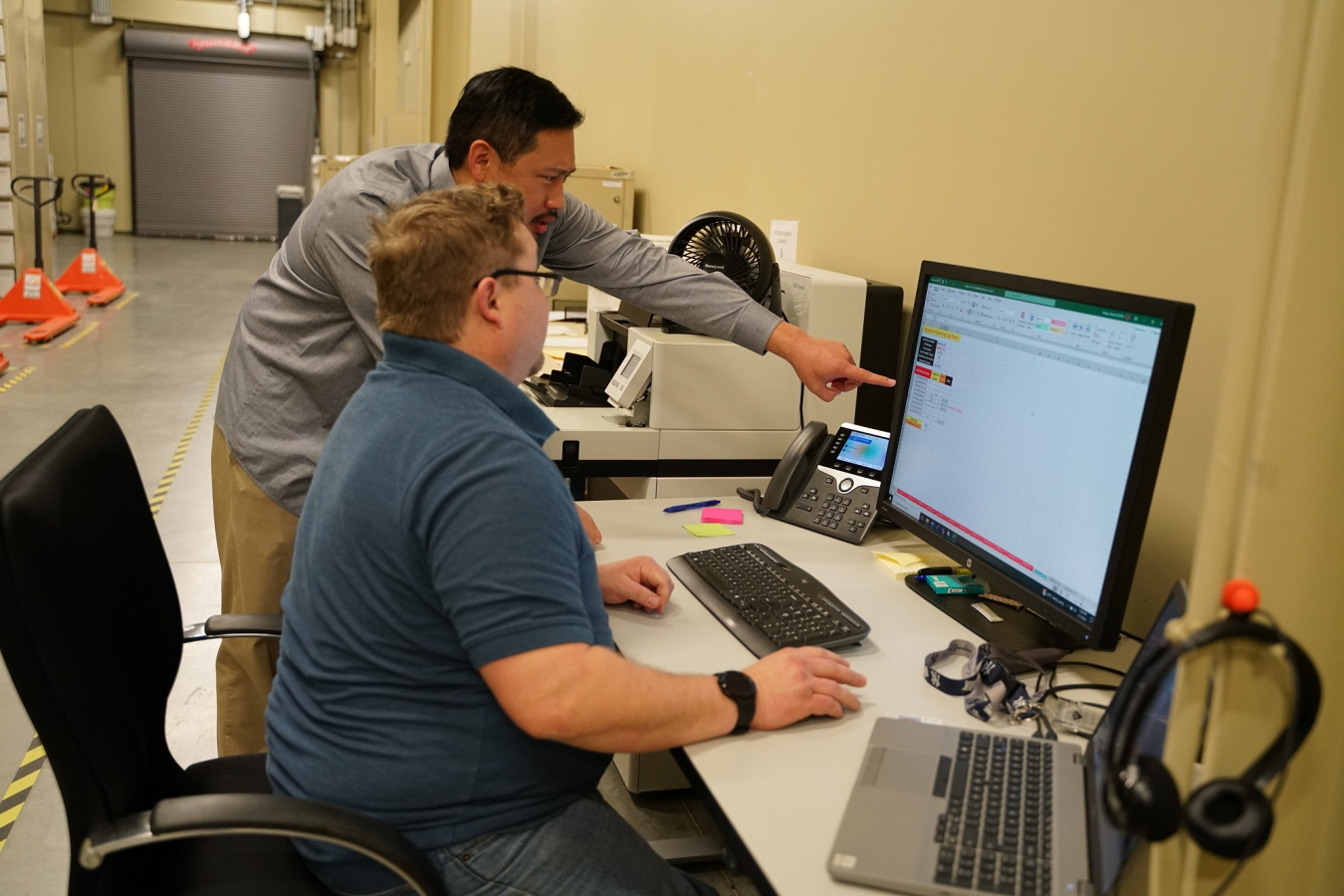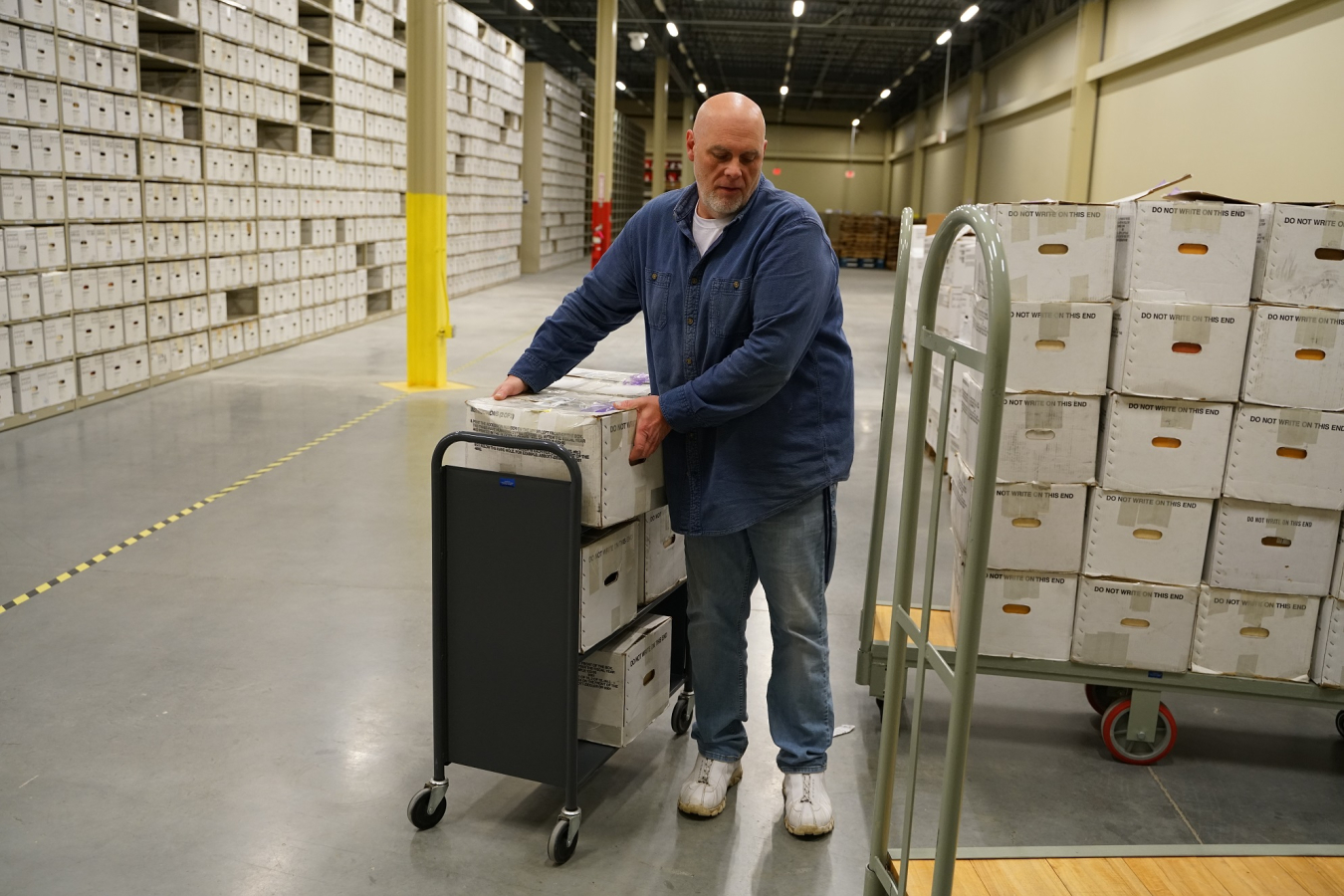Morgantown team converting physical records into electronic format to better preserve DOE’s story.
April 4, 2023
The Legacy Management Business Center in Morgantown, West Virginia.
In Morgantown, West Virginia, the Records and Information group, under the office of Legacy Management’s Archives and Information Management team, is in the midst of a herculean task: organizing thousands of Department of Energy records, some nearly a century old.

LM Records and Information Management Specialist Giancarlo Deguia, standing, works with Warehouse Logistics Specialist Daniel Raines at LM’s business center in Morgantown, West Virginia.
Giancarlo Deguia, a records, archives, and information management specialist, is part of this effort. For decades, documents dating back to the Cold War era covering myriad topics were scattered across the country at different DOE-predecessor, now LM-managed sites. For Deguia, the entire undertaking has been a lesson in history.
“My favorite part of this process has been learning more about the DOE story. I didn’t know there were more than one hundred sites spread throughout the country that all played a part in winning the second world war and the Cold War,” Deguia said.

Dale Spradley sorts boxes of material at the Legacy Management Business Center storage facility in Morgantown, West Virginia.
The massive conglomeration now requires a team of nearly 20 people to review, analyze, and categorize original collections of paperwork, in some cases, that document activities related to the Manhattan Project, its novel research, and its legacy. In addition, the team continues to receive newly inherited records across LM’s 100+ site portfolio. As that sorting continues in a facility that can accommodate up to 130,000 cubic feet of records, Deguia says his amazing team doesn’t feel burdened by the weight of history but buoyed by it.
“This work proves how others truly encompassed that American spirit. Everyone contributed to the success of America during that time, and helped shape it into what it has become,” Deguia said.
Today, DOE is still performing missions focused on research and development for not only the nation’s nuclear deterrence capabilities, but also innovation for the future of clean energy, all while continuing the environmental cleanup and long-term stewardship mission and responsibility of legacy sites.
Meanwhile, a team of people in Morgantown focuses on the laborious process of converting physical records into digital versions, to preserve and index them for posterity.
“There’s a lot of different ways of looking at this information and understanding what it is, where it’s archived, how to reach it, and how to access it, to help us in the future for the decision-making process.” The job involves more than organizing. “LM’s main role [for information management] is to identify the historical value and then determine whether a document is considered valuable to scientific and technical data or research,” Deguia said. “The next step is deciding whether that information should be considered a record and remain in its original format or if it needs to be digitalized.”
“The importance of this information, in terms of impacting public health and the environment, cannot be overstated. It’s also essential for future generations to look back and learn about what happened and how it happened in order to understand the processes, procedures, and policies in place today. The historical data, information, and records also lend to the foundational building blocks of planning for the future. If we can better understand what happened in the past, we can ensure and develop a more successful and prosperous path forward.”
“Reviewing the records opens a time capsule that reveals the expansive history of DOE’s legacy and the importance of LM’s role as stewards of these legacy sites, and how they together helped to shape American history,” Deguia said.
The records tell the story of each of LM’s sites, from inception to production, shutdown to remediation and cleanup, and leading to long-term stewardship, monitoring, and beneficial reuse in present day.
“You can't know where you're going if you don't know where you've been. We need to know that history to go forward and fulfill our mission of protecting the future of public health and the environment,” said David Von Behren, supervisor of the education, communication, history, and outreach team.

